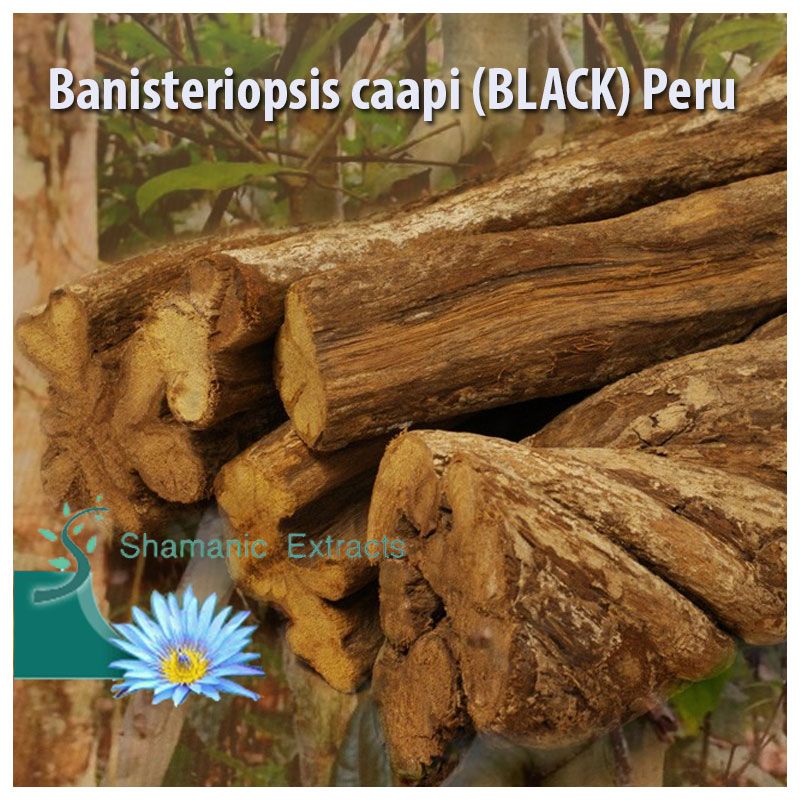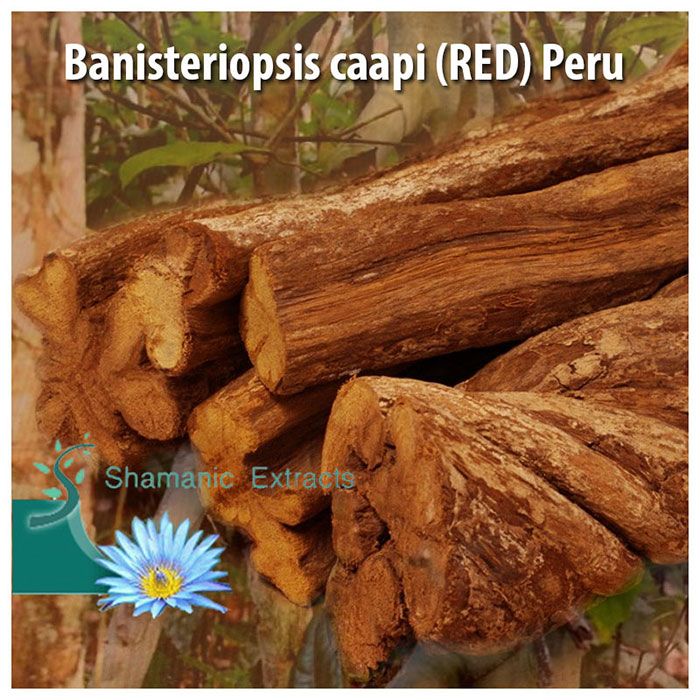Banisteriopsis caapi is one of the two fundamental elements of Ayahuasca, a conventional therapeutic and visionary blend from the Amazon district. It contains a high grouping of common MAO-inhibitors and has capable laxative impacts.
Some indigenous individuals recognize more than 40 assortments. Two assortments that are basic are Ourinhos and Trueno. “Ourinhos” truly signifies “minimal gold” and this strain is obviously the one utilized by the Ayahuasca-drinking temples (Santo Daime, UDV, and Barquinha).
- Banisteriopsis caapi (BLACK) (Clavo Huasca – Negro) Dried Vine. Very rare and potent black caapi vine, usually only consumed by shamans!
- Banisteriopsis caapi (RED) Huizo Oni Yage (Rojas – Red – Colorada Huasca) Dried Vine. Used almost exclusively by shamans to facilitate healing of others.
- Banisteriopsis caapi (White) (Clavo Huasca – Blanca) Dried Vine. Used almost exclusively by shamans to facilitate healing of others.
- Banisteriopsis caapi (YELLOW) Peru Panshin Oni Yage (Cielo – Yellow, Heaven/Sky Huasca) Dried Vine. Traditionally considered the best for Initiation. The most commonly employed in curanderismo in Amazonian Peru.
Indigenous names – yagé, huasca, rambi, shuri, ayahuasca, nishi oni, natema, iona, mii, nixi, pae, ka-hee, mi-hi, kuma-basere, etc
Taxonomy – Malpighiaceae (liana family)

Banisteriopsis caapi: The Heart of Ayahuasca and Its Ancient Significance
Banisteriopsis caapi, a jungle vine from the Malpighiaceae family, thrives across the rainforests of Amazonian Peru, Ecuador, Colombia, Bolivia, western Brazil, and parts of the Orinoco basin. Revered for centuries, this vine is integral to Amazonian traditional medicine, serving both as a remedy for diseases and as a gateway to visionary and mythological realms that offer profound insights, healing, and spiritual security (Dobkin De Rios, 1972; Andritsky, 1984).
As the key ingredient in Ayahuasca, Banisteriopsis caapi is often combined with other plants like Psychotria viridis (chacruna) or Diplopterys cabrerana (chagropanga, chaliponga, oco-yage). Together, these plants form a sacred brew used in ceremonial practices. The vine contains beta-carbolines, compounds known for their sedative, hypnotic, entheogenic, anti-depressant, and monoamine oxidase (MAO) inhibiting properties (McKenna et al., 1996). This brew represents a rich and complex indigenous pharmacopoeia, enhanced with additional plants depending on specific medicinal or spiritual needs. Examples include Brugmansia suaveolens (Toe), Brunfelsia grandiflora (Chiric Sanango), Tynnanthus panurensis (Clavohuasca), Cyperus (Piripiri), Petiveria alliacea (Mucura, Anamu), and Mansoa hymenaea (Ajos Sacha), among many others.
A Glimpse into History
The use of Ayahuasca dates back to ancient times, potentially to the earliest aboriginal inhabitants of the Amazon (Schultes & Hofmann, 1992). Archaeological evidence, such as a ceremonial stone cup with intricate engravings from the Pastaza culture of the Ecuadorian Amazon (500 B.C. to 50 A.D.), provides tangible links to its long-standing history (Naranjo, 1979, 1986). The patterns seen in traditional textiles, pottery, and body art from various tribes are often inspired by shamanic visions.
Ayahuasca’s deep cultural and spiritual roots are reflected in myths that connect its origin to the creation of the universe, the Earth, and humanity. Indigenous groups universally regard Banisteriopsis caapi as a sacred vine that bridges the physical and primordial worlds, offering transformative insights (Luna, 2000). Today, Ayahuasca remains one of the most revered sacred medicines in the Americas.
How to Prepare Banisteriopsis caapi
The preparation of Banisteriopsis caapi begins by pounding the vine with a mallet until it becomes soft, fibrous strands. The recommended dosage varies depending on the type, quality, purpose, and individual sensitivity.
When used alone: Typical dosages range from 25 to 150 grams.
In Ayahuasca blends containing DMT: Dosages range from 50 to 100 grams for lighter effects and 100 to 150 grams for stronger effects.
Safety and Precautions
Banisteriopsis caapi contains MAO-inhibiting compounds, which can interact dangerously with certain medications, foods, or psychoactive substances. While these interactions are harmless on their own, combining them with B. caapi can lead to serious side effects. Always exercise caution and consult a knowledgeable practitioner before use.
Banisteriopsis Caapi
Explore Our Banisteriopsis Caapi Collection from Peru
Discover authentic Banisteriopsis caapi vine pieces in Black, Red, Yellow, and White — rare and powerful varieties sourced directly from the Peruvian Amazon. These sacred ayahuasca ingredients are ideal as altar pieces or for traditional brew preparation. Sustainably harvested and full of spiritual potency.

![Banisteriopsis caapi is one of the two fundamental elements of Ayahuasca, a conventional therapeutic and visionary blend from the Amazon district. It contains a high grouping of common MAO-inhibitors and has capable laxative impacts. Some indigenous individuals recognize more than 40 assortments. Two assortments that are basic are Ourinhos and Trueno. “Ourinhos” truly signifies “minimal […]](https://shamanic-extracts.com/wp-content/uploads/sites/124/Banisteriopsis-Caapi.jpg)

